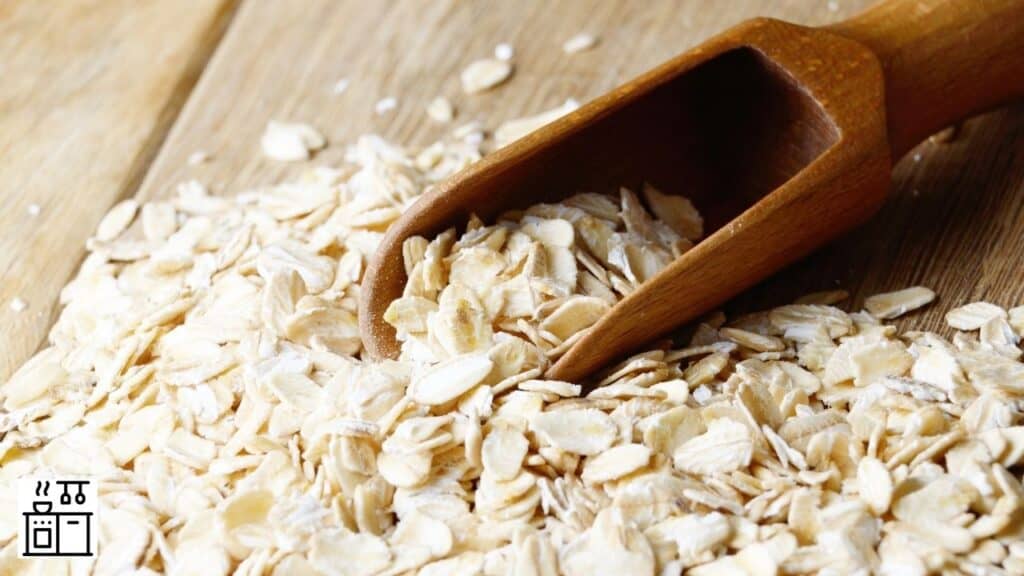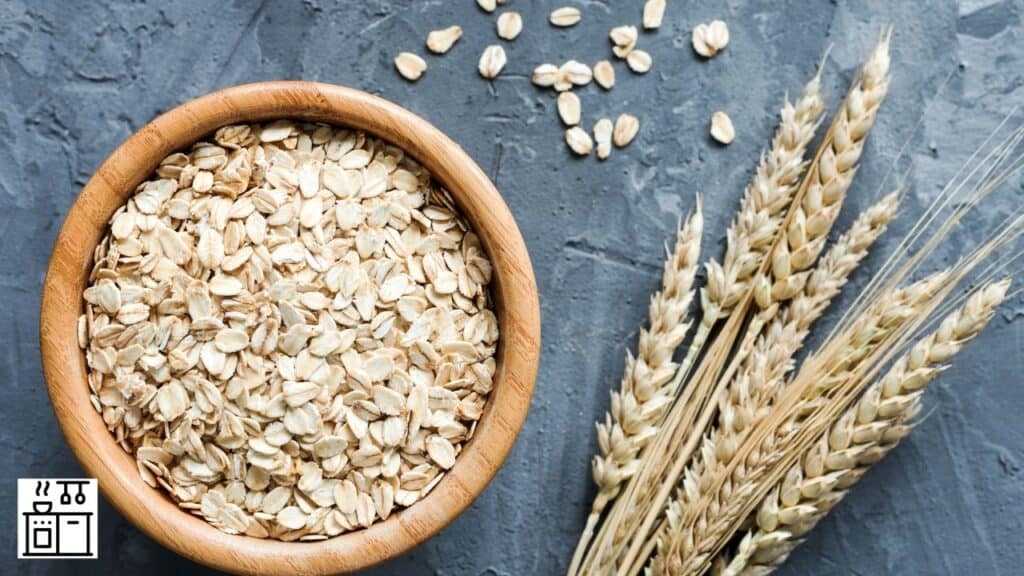Oats are a breakfast staple in many parts of the world. They’re widely popular because of how easy they’re to prepare and their variety of uses. So, what are oats made of?
Oats are food grains or cereals that come from the Avena Sativa or oat plant. The seeds are processed and cleaned before being rolled, steel-cut, or pounded into fine powder. Depending on the processing method, the oat seeds are thus transformed into oatmeal, oat flakes, or oatmeal flour.
Let’s take a closer look at this food grain to understand it better.
How Are Oats Made?
Oatmeal that you buy from a supermarket or grocery store is a processed product.
In its raw form, it’s a food grain that grows in fields like wheat or barley.
Oats grow best in places with pleasant summers and plenty of rainfall.
They’re annual plants that can either be planted in spring or winter.
Depending on when they’re grown, there are two varieties—spring oats and winter oats.
Spring oats are usually harvested in August or September, while winter oats are harvested in spring.
Oat plants are easily recognizable by their long husks dangling from the main plant stalk.
The seeds are present inside the husk. They ripen inside the confines of the husk until they’re ready to be harvested.
During harvest season, the oats are harvested with or without their husks.
Traditional oatmeal processing uses whole oats.
After harvesting the seeds, they’re milled with the husk.
The milling process involves roasting the oats in kilns with the husks on.
After roasting the oats at a high temperature, it’s further steamed by keeping the husk on.
The husk imparts a rich and nutty flavor to the oats.
After this stage, the oats are further flattened, chopped, and milled to produce the desired consistency and texture for different types of products.
The modern practice is to harvest oats without the husk.
Stripping the oats of their outer covering affects the taste and texture of the final product.
In this case, the hulls are separated from the oats using a device called an impeller.
The husks are then used as animal feed.
What Happens After Harvesting Oats?
The hulling process employs strong force and high speed to separate the oat grain from the husk.
So the whole oats may break down during this process.
The oats that are left behind are separated by size using screens.
The whole oats, which are the largest, are first separated.
Then, finer screens are used to separate the oats that remain into coarse, regular, and fine-sized grains.
So this is how you end up with whole oats, coarse steel-cut oats, steel-cut oats, and fine-cut oats.
After this stage, flaking and milling are performed to create the desired end product.
For whole oat products, the entire groats are taken directly to a grinding unit.
However, for refined oat flour, the bran is completely stripped from the grain, and the flour is made using only the endosperm.
The endosperm is the starchy white portion inside the seed. It’s rich in carbohydrates but doesn’t have much protein.
After separating the endosperm from the bran, it’s powdered to produce refined oat flour leaving the oat bran behind.
Recommended: Can You Use Granny Smith Apples For Baking? | 3 Reasons Granny Smith Apples Costly | What Are Refried Beans Made Of?
Different Types Of Oats
Oats can be classified into the following.
1. Whole Oats
Whole oats are raw oats with just the hull removed.
The grain is intact in this type of oats. So it contains the endosperm, germ, and bran.
It’s the most nutritious form of oat because it retains most of the nutritional content of the grain.
However, it’s also the slowest to cook because of its high fiber and protein content.
The texture of whole oats resembles rice. It’s often used to prepare wholesome meals like porridge and salads.
2. Steel-Cut Oats
The whole oat is cut using steel blades to produce steel-cut oats.
They’re minimally processed but smaller than whole oat groats.
Steel-cut oats take a long time to cook and are best suited for overnight oat recipes.
3. Rolled Oats

Rolled oats are the most widely available type of oats.
They’re packed with nutritive goodness. They take less time than steel-cut oats to cook.
The processing stage involves steaming the oat groats and rolling them flat using rollers.
It’s available in different thicknesses.
Rolled oats are versatile ingredients.
You can use them in porridges, pancakes, muesli, granola, smoothies, and overnight oats recipes.
They take only five to ten minutes to cook.
4. Scottish Oats
Scottish oats are a traditional variety of oats.
They’re finely ground, and the grain size is just a little bigger than oatmeal.
The production process of Scottish oats is different from that of regular rolled oats.
A stone-grinding process is employed, which results in grains with a smooth texture.
They cook in less than ten minutes and are mostly used to prepare porridge.
5. Instant Oats
Instant oats are a processed version of rolled oats.
The rolled oats are pre-cooked, dried, and cut into smaller pieces to produce them.
The grain becomes smaller and smoother during the processing stage.
Hence, it cooks quickly and becomes very soft.
You can even consume them by simply soaking them in hot water.
Many manufacturers mix instant oats with sugar, salt, and other flavoring agents and sell them as ready-to-eat products.
6. Quick Oats
Quick oats are easier to prepare than Scottish oats and rolled oats.
However, they take longer to cook than instant oats.
The main difference between quick oats and rolled oats is the grain size.
Quick oats are smaller because they’re rolled thinner than rolled oats and chopped into smaller grains.
They take less than three minutes to cook and turn soft.
Hence, they’re easy to prepare and do well in smoothies, overnight oats, granola, and pancake recipes.
7. Oat Flour
Oat flour is the smoothest form of rolled oats. It’s made by grinding the oat grain into a fine powder.
Oat flour can be made using whole oat grain or only the germ.
When it’s made using whole grain, it’s healthier because it contains protein and fiber.
Refined oat flour is made using only the endosperm and hence lacks fiber.
Oat flour is commonly used for baking and in pancake mixes.
It’s also used as a thickening agent for soups and stews.
Related: How To Use A Griddle Properly? | What Material Woks Are Good? | 8 Side Dishes To Eat With Corned Beef Sandwiches
8. Oat Bran
Oat bran is a by-product of oats processing.
It’s the part that remains after the refining process and consists of the bran or husk.
Oat bran is full of fiber and has a gritty texture.
Due to its high nutrient and fiber content, it’s often added to cereals and other enriched packaged foods.
You can also mix it with different types of dough and batters to enhance their fiber content.

